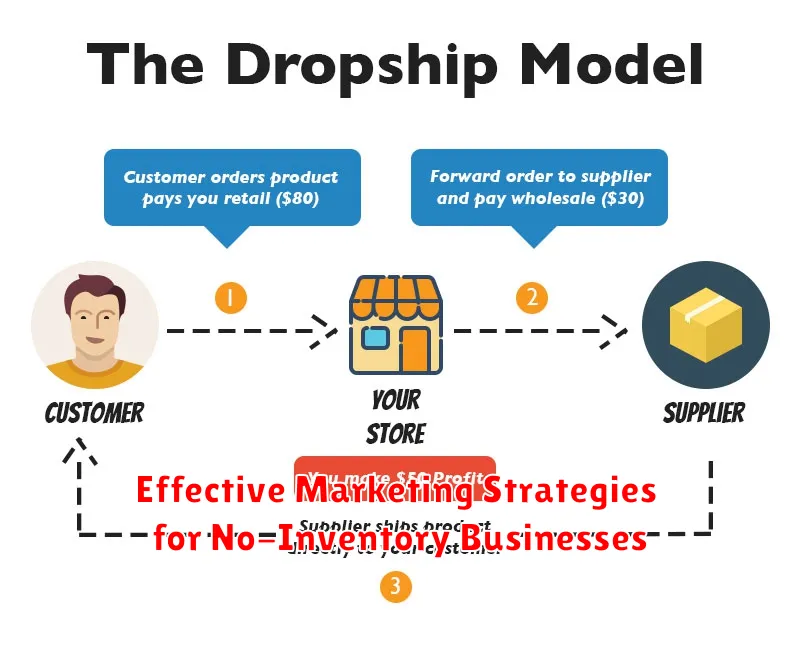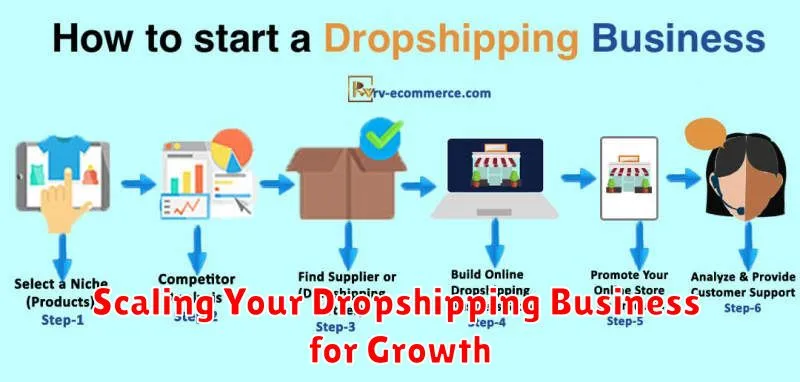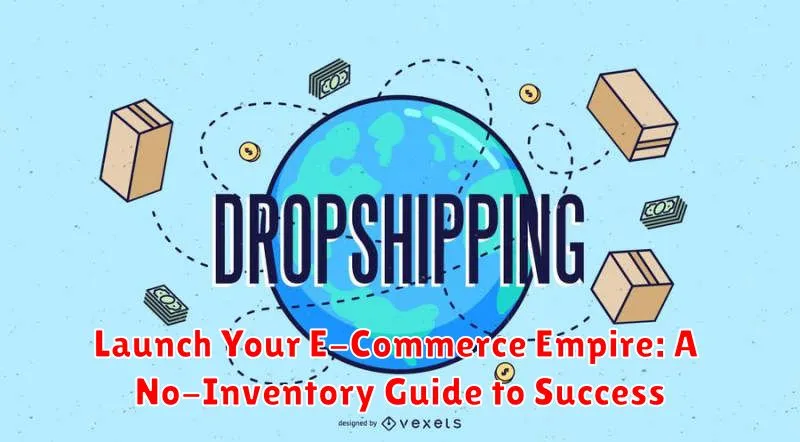Dreaming of launching your own e-commerce empire but overwhelmed by the complexities of inventory management? You’re not alone. This comprehensive guide eliminates that hurdle, presenting a proven no-inventory model for building a successful e-commerce business. Learn how to navigate the world of dropshipping, print-on-demand, and other innovative strategies to generate revenue without the traditional burdens of stocking, storing, and shipping physical products. Discover how to select the right niche, build a compelling brand, and market effectively to reach your target audience.
Within these pages, you’ll unlock the secrets to creating a thriving online business without the upfront investment and ongoing hassle of inventory. We’ll explore the advantages and disadvantages of various no-inventory methods, providing step-by-step guidance on everything from selecting reliable suppliers to optimizing your website for conversions. Prepare to launch your e-commerce empire with confidence and embark on the path to financial freedom, leveraging the power of the no-inventory model.
Understanding the Dropshipping Model
Dropshipping is a retail fulfillment method where a store doesn’t keep the products it sells in stock. Instead, when a store sells a product using the dropshipping model, it purchases the item from a third party – a dropshipping supplier – and has it shipped directly to the customer. This means you, as the store owner, don’t have to handle the product directly.
This model offers several key advantages. First, it significantly reduces the startup costs because you don’t need to invest in inventory. Second, it offers location independence, allowing you to operate your business from anywhere with an internet connection. Finally, it provides scalability, as you can easily add new products without worrying about storage space.
The process typically involves a customer placing an order on your online store. You then forward that order and customer details to your dropshipping supplier. The supplier fulfills the order and ships it directly to the customer. You never physically touch the product, but you profit from the difference between the price you charge the customer and the price you pay the supplier.
Finding Your Niche and Target Audience
Niche selection is crucial for dropshipping success. A niche represents a specialized segment of the market. Focusing on a niche allows you to target specific customer needs and build a strong brand identity.
Identifying your target audience goes hand-in-hand with niche selection. Understanding your ideal customer’s demographics, interests, and online behavior is essential for effective marketing and sales. Consider factors like age, location, income level, and online shopping habits.
Research is key. Use tools like Google Trends, social media analytics, and competitor analysis to identify profitable niches and understand your target audience’s preferences.
Consider these questions when evaluating a potential niche:
- Is there sufficient demand for products in this niche?
- Is the competition manageable?
- Can you effectively reach your target audience within this niche?
By carefully selecting a niche and understanding your target audience, you’ll lay a strong foundation for your e-commerce empire.
Selecting Reliable Dropshipping Suppliers
Choosing the right dropshipping suppliers is crucial for your e-commerce success. A reliable supplier ensures timely order fulfillment, quality products, and positive customer experiences. Conversely, an unreliable supplier can lead to shipping delays, damaged goods, and ultimately, damage to your brand reputation.
Begin your search by researching potential suppliers through directories, online forums, and industry events. Vetting potential suppliers is essential. Look for experience, positive reviews, and clear communication channels.
Key factors to consider when evaluating a supplier include:
- Product quality: Request samples to assess the quality firsthand.
- Shipping times and costs: Inquire about processing times and shipping options.
- Return policy: Understand their procedures for handling returns and refunds.
- Customer support: Evaluate their responsiveness and helpfulness.
- Technological capabilities: Determine if they offer integrations with e-commerce platforms.
Don’t hesitate to contact suppliers directly and ask questions. Building a strong relationship with your supplier is vital for long-term success.
Building Your Online Store: Platform Options
Choosing the right platform is crucial for your e-commerce success. Several options cater specifically to dropshipping, offering varying features and pricing.
Dedicated E-commerce Platforms
Platforms like Shopify provide a comprehensive suite of tools designed for online selling. They offer user-friendly interfaces, customizable themes, and integrated apps for dropshipping management. BigCommerce is another robust option, particularly suited for scalable growth. These platforms typically involve a monthly subscription fee.
Website Builders with E-commerce Functionality
Platforms like Wix and Squarespace offer e-commerce functionality within their website building tools. These are good starting points for smaller businesses, providing ease of use and affordability. However, they may have limitations as your business expands.
Online Marketplaces
While not a dedicated store, platforms like Etsy and Amazon Handmade offer established marketplaces to reach customers quickly. Consider these options for testing products or targeting specific niche audiences.
Carefully evaluate your budget, technical skills, and anticipated growth when selecting your platform. The right choice will streamline operations and contribute to your overall success.
Setting Up Payment Gateways and Processing
A critical aspect of your e-commerce operation is securely and efficiently processing payments. Choosing the right payment gateway is crucial for a smooth customer experience.
Payment gateways act as intermediaries between your online store and payment processors, authorizing transactions and ensuring funds are transferred safely. Popular options include PayPal, Stripe, Square, and Authorize.net. Consider transaction fees, supported currencies, and integration with your chosen e-commerce platform when selecting a gateway.
Payment processing involves several steps, from the customer entering their payment information to the funds being deposited in your account. This process typically includes authorization, capture, and settlement. Ensure your chosen payment gateway and processor support the payment methods your target audience prefers, such as credit cards, debit cards, and digital wallets.
Security is paramount when handling financial transactions. PCI DSS compliance is essential for protecting customer data and maintaining trust. Your chosen payment gateway should adhere to these standards. Additionally, consider implementing fraud prevention measures such as address verification and 3D Secure authentication.
Crafting Compelling Product Descriptions
Product descriptions are your digital storefront salespeople. They convince potential customers to click that “buy” button. With a no-inventory model, you’re not physically handling the product, so your description becomes even more crucial.
Focus on the benefits, not just the features. Instead of simply stating “100% cotton,” explain how that translates to a soft, comfortable feel. Highlight how the product solves a problem or improves the customer’s life. Will it save them time? Make them feel more confident? Address these key questions.
Use vivid language to paint a picture in the customer’s mind. Imagine they are holding the product. What do they see, feel, smell? Engage their senses.
Keywords are essential for search engine optimization. Naturally incorporate relevant terms that shoppers use when searching for similar products. Don’t stuff keywords, however, as this can negatively impact readability and SEO.
Finally, proofread meticulously. Errors in grammar and spelling erode trust and professionalism. Ensure your descriptions are clear, concise, and error-free.
Effective Marketing Strategies for No-Inventory Businesses

Marketing is crucial for no-inventory e-commerce success. Targeted advertising is key, focusing your budget on reaching the right audience. Explore platforms like Facebook Ads and Google Ads to pinpoint demographics and interests.
Influencer marketing can significantly boost brand visibility. Partnering with relevant influencers exposes your products to a wider, engaged audience. Consider micro-influencers for cost-effective, niche marketing.
Leverage the power of social media marketing. Create engaging content that showcases your products and builds a community around your brand. Consistent posting and interaction are vital for maintaining audience interest.
Content marketing can drive organic traffic to your store. Create valuable content, such as blog posts or videos, related to your products or niche. This establishes you as an authority and attracts potential customers.
Email marketing remains a powerful tool. Build an email list and send targeted campaigns showcasing new products, promotions, or valuable content.
Managing Customer Service and Returns
Exceptional customer service is crucial for any e-commerce business, especially those operating with a no-inventory model. Prompt and helpful responses can significantly impact customer satisfaction and loyalty.
Establish clear communication channels. Offer support through email, live chat, or social media. Ensure inquiries are addressed quickly and efficiently. A dedicated customer service representative can streamline this process, providing a consistent and professional experience.
Returns are an inevitable part of e-commerce. Develop a comprehensive return policy that is easy to understand and accessible to customers. Clearly outline the steps involved in returning a product, including who covers shipping costs and the timeframe for refunds. A streamlined return process can minimize customer frustration and build trust.
Proactively address potential issues. Communicate shipping updates and estimated delivery times to customers. Provide tracking information so customers can monitor their orders. Addressing potential problems before they escalate can prevent negative customer experiences and reduce the likelihood of returns.
Scaling Your Dropshipping Business for Growth

Once your dropshipping business demonstrates consistent profitability, it’s time to consider scaling. Strategic scaling involves expanding your operations while maintaining efficient processes. This isn’t simply about increasing sales, but also about optimizing your existing infrastructure to handle increased demand and maximizing profitability.
Automating tasks is crucial for scaling. Explore automated solutions for order fulfillment, customer service inquiries, and marketing campaigns. This frees up your time to focus on higher-level strategic decisions.
Expanding your product offerings is another key aspect of growth. Thoroughly research market trends and identify products that complement your existing catalog. Consider adding products with higher profit margins or those that appeal to a wider audience.
Optimizing your marketing efforts is essential for driving increased sales. Analyze your current marketing channels and identify areas for improvement. Experiment with new advertising platforms and refine your target audience for more effective campaigns.

